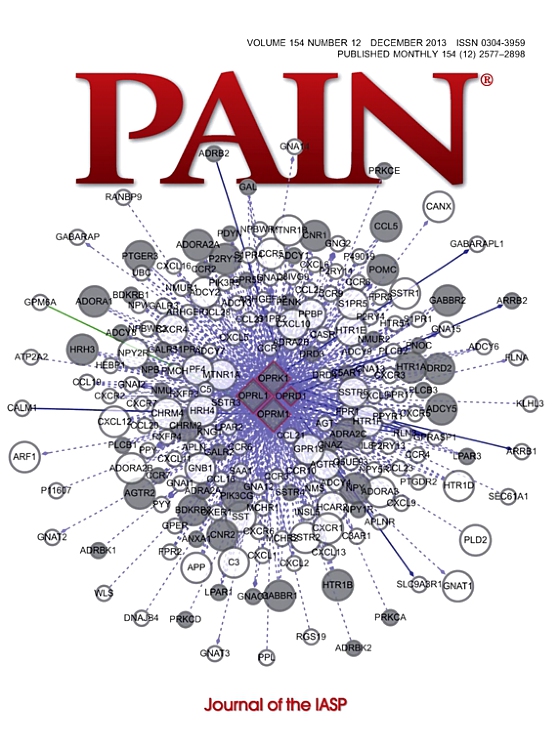Minimum clinically important differences in acute pain: a patient-level re-analysis of randomized controlled analgesic trials submitted to the US Food and Drug Administration.
IF 5.9
1区 医学
Q1 ANESTHESIOLOGY
引用次数: 0
Abstract
The lack of established minimum clinically important differences in acute pain has made it challenging to interpret efficacy in analgesic trials. We performed a patient-level re-analysis of double-blind, placebo-controlled trials submitted to the US Food and Drug Administration to estimate minimum clinically important differences in acute postoperative pain. Trials were categorized by acute surgical pain model: dental extraction, bunionectomy, orthopedic surgery, and soft tissue surgery. Pain intensity was assessed using the 0 to 10 numeric rating scale (NRS) or 0 to 100 visual analog scale, with visual analog scale scores converted to NRS for analysis. To avoid misclassification from arbitrary thresholds on global impression of change or pain relief scales, meaningful pain relief was determined using the double-stopwatch technique, where patients actively indicated the times they experienced perceptible and meaningful relief. Across 29 trials, 9047 patients with moderate-to-severe baseline pain were included. Patients with severe baseline pain (NRS ≥7) reported meaningful relief at a higher absolute NRS and required larger absolute reductions in pain intensity than those with moderate baseline pain (NRS 4-<7). However, the percent reduction in pain at meaningful relief remained stable across baseline pain levels, suggesting patients assess meaningful relief in relative rather than absolute terms. No appreciable differences in the changes in pain at meaningful relief were observed by age, sex, drug, or route of administration. Receiver operating characteristic curve analysis identified a 50% reduction in pain intensity as a consistent and clinically meaningful threshold across surgical pain models, supporting its use as a standardized patient-centric metric for evaluating analgesic efficacy.急性疼痛的最小临床重要差异:提交给美国食品和药物管理局的随机对照镇痛试验的患者水平再分析。
在急性疼痛中缺乏确定的最小临床重要差异使得解释镇痛试验中的疗效具有挑战性。我们对提交给美国食品和药物管理局的双盲安慰剂对照试验进行了患者水平的再分析,以估计急性术后疼痛的最小临床重要差异。试验按急性手术疼痛模型分类:拔牙、拇囊炎切除术、骨科手术和软组织手术。疼痛强度采用0 - 10数值评定量表(NRS)或0 - 100视觉模拟量表进行评估,视觉模拟量表得分转换为NRS进行分析。为了避免对整体印象变化或疼痛缓解量表的任意阈值进行错误分类,使用双秒表技术确定有意义的疼痛缓解,患者主动指出他们经历可感知和有意义的缓解的时间。在29项试验中,9047名患有中度至重度基线疼痛的患者被纳入研究。严重基线疼痛(NRS≥7)的患者在较高的绝对NRS下报告了有意义的缓解,并且比中度基线疼痛(NRS 4-<7)的患者需要更大的绝对疼痛强度降低。然而,在基线疼痛水平上,有意义缓解的疼痛减少百分比保持稳定,这表明患者以相对而不是绝对的方式评估有意义的缓解。在有意义的缓解疼痛的变化中,没有观察到年龄、性别、药物或给药途径的明显差异。接受者工作特征曲线分析表明,在手术疼痛模型中,疼痛强度降低50%是一个一致且具有临床意义的阈值,支持将其作为评估镇痛疗效的标准化以患者为中心的指标。
本文章由计算机程序翻译,如有差异,请以英文原文为准。
求助全文
约1分钟内获得全文
求助全文
来源期刊

PAIN®
医学-临床神经学
CiteScore
12.50
自引率
8.10%
发文量
242
审稿时长
9 months
期刊介绍:
PAIN® is the official publication of the International Association for the Study of Pain and publishes original research on the nature,mechanisms and treatment of pain.PAIN® provides a forum for the dissemination of research in the basic and clinical sciences of multidisciplinary interest.
 求助内容:
求助内容: 应助结果提醒方式:
应助结果提醒方式:


